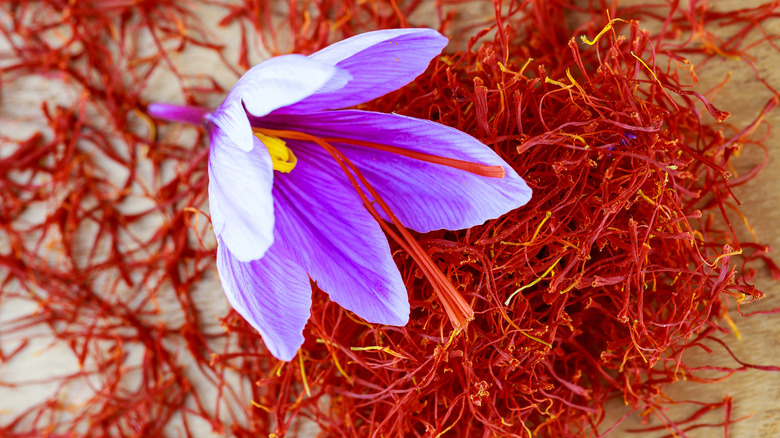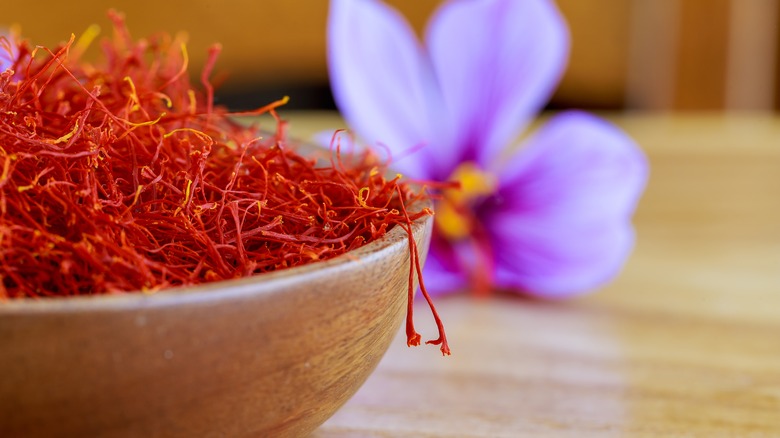The Origin Story Of Saffron Is Believed To Have Begun In Ancient Times
Famously known as the world's most expensive spice, saffron's history is as prestigious as the spice itself. Saffron has been a staple of several cultural cuisines, from the humble Spanish paella to the smoky Iranian jujeh kebab. As you can tell, saffron's warm flavors come from appropriately temperate locales. Research from 2017 suggests that saffron originates from the historical region of Greater Khorasan in Iran. In those arid plains, the autumn-flowering purple crocus from which saffron is derived grows in great numbers.
Iranian chef Najmieh Batmanglij gave a particularly in-depth view of what goes into saffron manufacturing, stating, "It is the most labor-intensive spice to produce, and the most expensive spice in the world." The climate has to be just right needing mild winters and dry summers. Even the soil needs to be a specific mix of gravel and red clay. The title of most expensive spice isn't just clever marketing. Turning purple crocus flowers into saffron spice is an arduous process, and there's no doubt that Iran is the leader in saffron manufacturing. It's easy to see why most people assume Iran is the origin of this regal spice.
However, the existence of saffron cultivation dates all the way back to ancient Assyria, which notably includes territory that covers modern Iran, according to texts found in the libraries of King Ashurbanipal. While this definitively places the presence of saffron on what would become modern Iran, that doesn't mean it's where the purple crocus flowers first bloomed.
Saffron's origins are hotly contested to this day
For one thing, the Neo-Assyrian empire that King Ashurbanipal ruled was the largest up to that point in human history. This means that it had a massive trade network, and researchers in 2002 made claims that the Phoenicians were the ones who introduced saffron all over the Mediterranean and South Asia. While this still results in saffron being dominant in those places, it does mean there's credence to the theory that it bloomed in Ancient Greece first. Alexander the Great was famously known for his fondness of saffron, going as far as mixing the expensive spice into his baths, though that could easily be seen as a flex on his part. Basically, the true birthplace of saffron could be anywhere from Ancient Greece to the Persian Empire's many territories.
While there's no definitive answer as to where saffron originated from, there's no questioning its cultural impact on Iran. As soon as the purple crocus flowers bloomed in the dryer parts of South Asia, the civilizations there cultivated them en masse. Nowadays, Iran produces 90% of the world's saffron, thanks to its unique climate being the perfect spot for these expensive flowers to grow. These flowers are integral to Iran's rich history and economic health.

